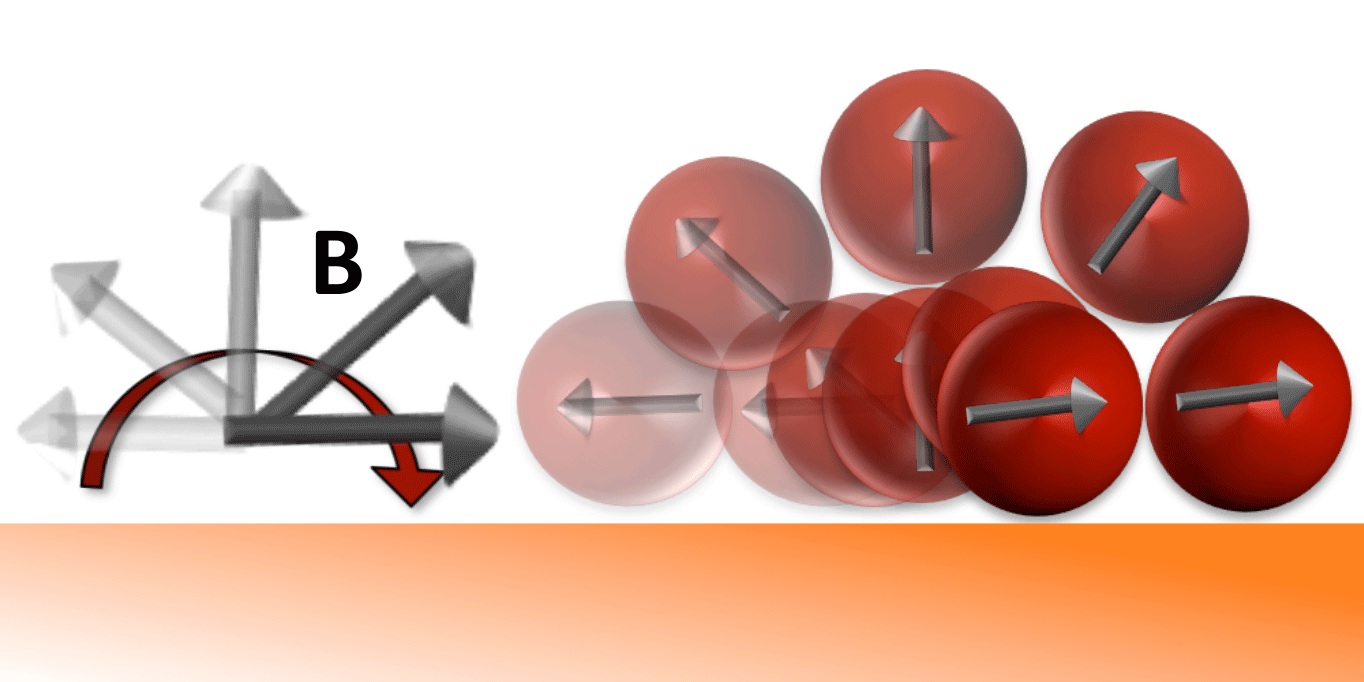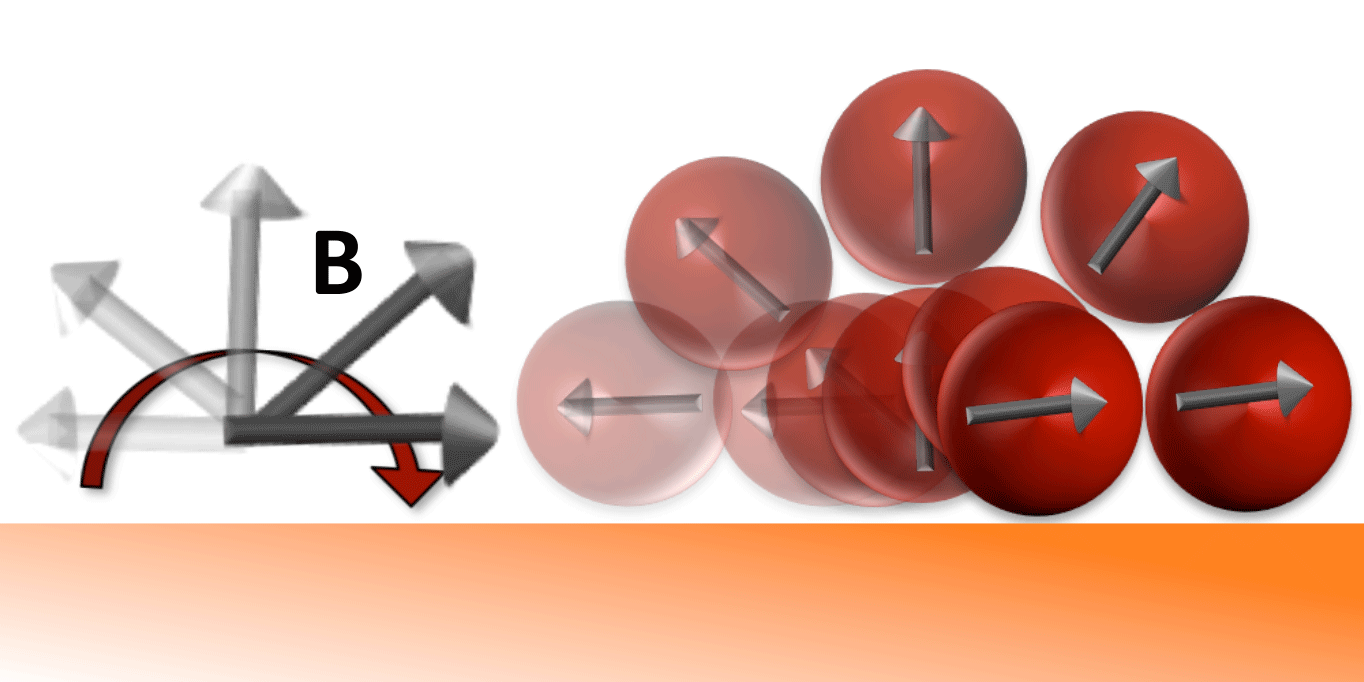Friction Gradients Guide Artificial Walkers
Cells moving within the body constantly encounter different surfaces, which triggers them to perform specific functions and directs their motion. One way cells detect surface changes is friction: Variations in the density or chemistry of molecules change the frictional tug on the cell wall, guiding it in the right direction. Experiments performed by Alfredo Alexander-Katz and colleagues from the Massachusetts Institute of Technology in Cambridge demonstrate that the motion of micrometer-sized magnetic beads can similarly respond to changes in friction, opening the door to detectors that sense small-scale variations in the chemistry of a surface.
The group prepared pairs of magnetic beads and made them roll over a surface by applying a rotating magnetic field. The beads and surface were coated with complementary biological molecules (ligands and receptors) that bind together, creating a frictional force that resisted the beads’ movement. In high-friction regions with many receptors, the beads tumbled over each other, “walking” along the surface. But in low-friction areas with few receptors, the bead pairs mainly spun in place, progressing slowly. Over time, beads on low-friction areas migrated towards regions of higher friction, while those on high-friction regions walked along the line of uniform friction. The observation that the magnetic “walkers” move toward high-friction areas could, according to the authors, be used in the design of micrometer-scale detectors that seek out certain chemicals on a surface.
This research is published in Physical Review Letters.
–Katherine Wright





